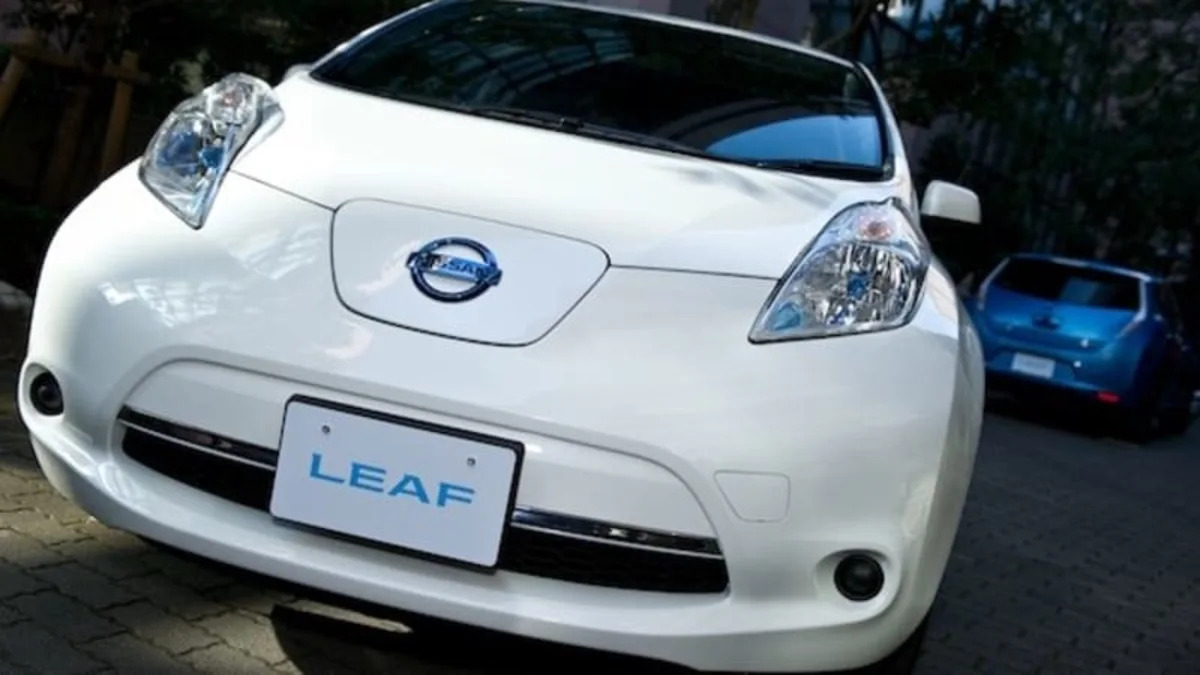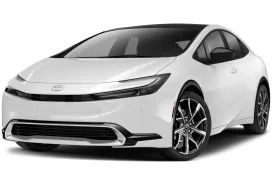We're not sure what "grain boundary diffusion" means, but it has something to do with the Nissan Leaf all-electric vehicle substantially cutting its use of rare-earth minerals in its electric motor, so we're all for it. The Japanese automaker says that, starting in November, it began building electric motors for the Leaf that use 40 percent less of the rare-earth mineral dysprosium than before. Dysprosium was used to make the fast-spinning magnets inside the electric motor more heat resistant, but Nissan found a way around much of that use, hence the super esoteric terminology "grain boundary diffusion."
The development marks good press for Nissan because it lessens the need for rare earth metals to be extracted from places such as China. Smaller amounts of rare earth metals also means lower cost, which can be a big help. In November, Nissan chief Carlos Ghosn said the automaker would miss its goal to sell 20,000 Leafs in the US this year. Nissan has, however, somewhat closed the gap between this year's sales and last year's during recent months. US Leaf sales in November more than doubled from a year earlier, and are down just 4.5 percent year-to-date.
Read Nissan's press release below, and check out its two-minute video here.
The development marks good press for Nissan because it lessens the need for rare earth metals to be extracted from places such as China. Smaller amounts of rare earth metals also means lower cost, which can be a big help. In November, Nissan chief Carlos Ghosn said the automaker would miss its goal to sell 20,000 Leafs in the US this year. Nissan has, however, somewhat closed the gap between this year's sales and last year's during recent months. US Leaf sales in November more than doubled from a year earlier, and are down just 4.5 percent year-to-date.
Read Nissan's press release below, and check out its two-minute video here.
Building a Greener LEAF
The Japan-market Nissan LEAF
Dec. 11 – Yokohama - Nissan's zero-emission LEAF electric vehicle just became even greener.
The latest version of the industry leader, introduced in Japan in November, has a new electric motor using 40% less of the rare-earth mineral dysprosium – without affecting performance.
"The driver will not notice any differences. Vehicle performance will remain unchanged," said Kiyoshi Takagi, deputy general manager in Nissan's Materials Technology Planning Group.
"In fact, the overall performance increased, so drivers don't need to worry."
The rare-earth element dysprosium
Dysprosium is added to the LEAF's electric-motor magnets to make them more resistant to heat as they spin at speeds of up to 10,000 rpm.
A new process called "grain boundary diffusion" allows Nissan to drastically cut rare-earth content in use a way that may extend beyond EVs and hybrids to use in other automotive applications.
"Dysprosium is used not only in the motor to power EVs, but also in components of existing internal combustion engines," said Ryou Murakami, manager of Nissan's Advanced Materials Laboratory.
Using less rare earth content is a goal of the Nissan Green Program 2016, part of a commitment to minimize use of scarce natural resources.
Cutting dysprosium in the LEAF also helps Nissan avoid supply constraints, with the large majority of the element mined in China, and lower costs as demand grows.
"Rare-earth metals, dysprosium in this case, are a scarce resource, which also impacts the environment during the mining process," said Takagi. "Reducing the usage of such resources will reduce this impact."
For a new generation of Nissan LEAF owners, greener production is already complementing zero-emission motoring.
The Japan-market Nissan LEAF
Dec. 11 – Yokohama - Nissan's zero-emission LEAF electric vehicle just became even greener.
The latest version of the industry leader, introduced in Japan in November, has a new electric motor using 40% less of the rare-earth mineral dysprosium – without affecting performance.
"The driver will not notice any differences. Vehicle performance will remain unchanged," said Kiyoshi Takagi, deputy general manager in Nissan's Materials Technology Planning Group.
"In fact, the overall performance increased, so drivers don't need to worry."
The rare-earth element dysprosium
Dysprosium is added to the LEAF's electric-motor magnets to make them more resistant to heat as they spin at speeds of up to 10,000 rpm.
A new process called "grain boundary diffusion" allows Nissan to drastically cut rare-earth content in use a way that may extend beyond EVs and hybrids to use in other automotive applications.
"Dysprosium is used not only in the motor to power EVs, but also in components of existing internal combustion engines," said Ryou Murakami, manager of Nissan's Advanced Materials Laboratory.
Using less rare earth content is a goal of the Nissan Green Program 2016, part of a commitment to minimize use of scarce natural resources.
Cutting dysprosium in the LEAF also helps Nissan avoid supply constraints, with the large majority of the element mined in China, and lower costs as demand grows.
"Rare-earth metals, dysprosium in this case, are a scarce resource, which also impacts the environment during the mining process," said Takagi. "Reducing the usage of such resources will reduce this impact."
For a new generation of Nissan LEAF owners, greener production is already complementing zero-emission motoring.





Sign in to post
Please sign in to leave a comment.
Continue